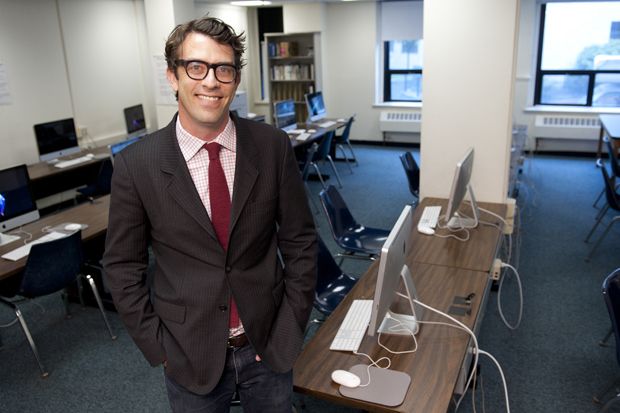3Qs: Analyzing ‘the first YouTube war’

Hundreds of amateur videos captured by news activists, citizen journalists and foreign correspondents in Homs, and distributed to news organizations and video-sharing websites around the world, have prompted some to dub the situation in Syria the “first YouTube war.” We asked Jeff Howe — an assistant professor of journalism in the College of Arts, Media and Design who coined the term “crowdsourcing” — to explain how videos of violence in Syria have shaped perception of the conflict.
According to a news activist quoted in The New York Times, roughly 80 percent of the videos of the Syrian conflict that have been broadcast on mainstream news organizations have originated from amateur videographers. Do you think raw video of death and destruction could prompt the rest of the world to respond to Syria’s humanitarian disaster in a way that a typical news report could not?
Sure; I think it already does. One of the biggest drawbacks to citizen video is its amateurism. Footage is grainy; the audio is fuzzy and hasn’t been properly mixed. But this is also its greatest strength — all that amateur videography has the unmistakable feel of real people bearing witness. It makes it incredibly compelling and provides an aura of authenticity.
Comparing any two conflicts is always comparing apples and oranges, but the United Nations, as well as the global media, are both heavily focused on Syria. One wonders what would have happened if similar footage had emerged from Somalia, Sudan or, going back a few years, Uzbekistan.
Activists say the makeshift media center where foreign war correspondent Marie Colvin was killed last month was the deliberate target of a rocket attack by Syrian troops, who reportedly pledged to “kill any journalist who set foot on Syrian soil.” How successful have journalists been in thwarting the government’s effort to control coverage of the conflict?
I’d turn that question on its head and ask: How successful has the regime’s war on journalists been? The sad answer is, pretty successful. Colvin’s death grabbed the headlines, but the day before, government forces killed Rami al-Sayed, a Syrian national responsible for a great deal of the footage of the attack on Homs. Compared to Libya or Tunisia or certainly Egypt, we’re essentially peering through a keyhole in Syria.
It’s impossible to gauge everything that’s not making it out to Western viewers, but it’s certainly a lot. Recently Syria managed to block access to the Swedish live-streaming site Bambuser, which had been the citizen journalist’s greatest tool in Syria. It would be erroneous, dangerous even, to pretend that the wonders of technology are winning the war against oppression and totalitarianism. It’s just not the case.
One activist in Homs, who dug out bodies after a rocket attack and then videotaped the effort, proclaimed that the conflict has turned every Syrian “into a journalist.” Compare the effort of citizen journalists in Syria with that of guerilla journalists in Egypt, Libya and Tunisia during the Arab Spring.
That’s awfully tough to answer. As much as we like to think of the “Arab Spring,” all these revolutions have little in common, even if they draw inspiration from similar sources. What is safe to say is that while [former Egyptian president] Hosni Mubarak was hardly overthrown because of social media — revolutions are composed of people, not technologies — Egypt demonstrates that in a technologically advanced, relatively open society, dissent is extremely hard to suppress. Syria and Iran have been far more active in deploying the technologies of censorship. Information may want to be free, but autocratic regimes retain the ability, even in this day and age, of restricting it.
One activist in Homs, who dug out bodies after a rocket attack and then videotaped the effort, proclaimed that every Syrian has been “made into a journalist.” Compare the effort of citizen journalists in Syria with that of guerilla journalists in Egypt, Libya and Tunisia during the Arab Spring.
That’s awfully tough to answer. As much as we like to think of the “Arab Spring,” all these revolutions have little in common, even if they draw inspiration from similar sources. What is safe to say is that while [former Egyptian president] Hosni Mubarak was hardly overthrown because of social media — revolutions are composed of people, not technologies — Egypt demonstrates that in a technologically advanced, relatively open society, dissent is extremely hard to suppress. Syria and Iran have been far more active in deploying the technologies of censorship. Information may want to be free, but autocratic regimes retain the ability, even in this day and age, of restricting it.





